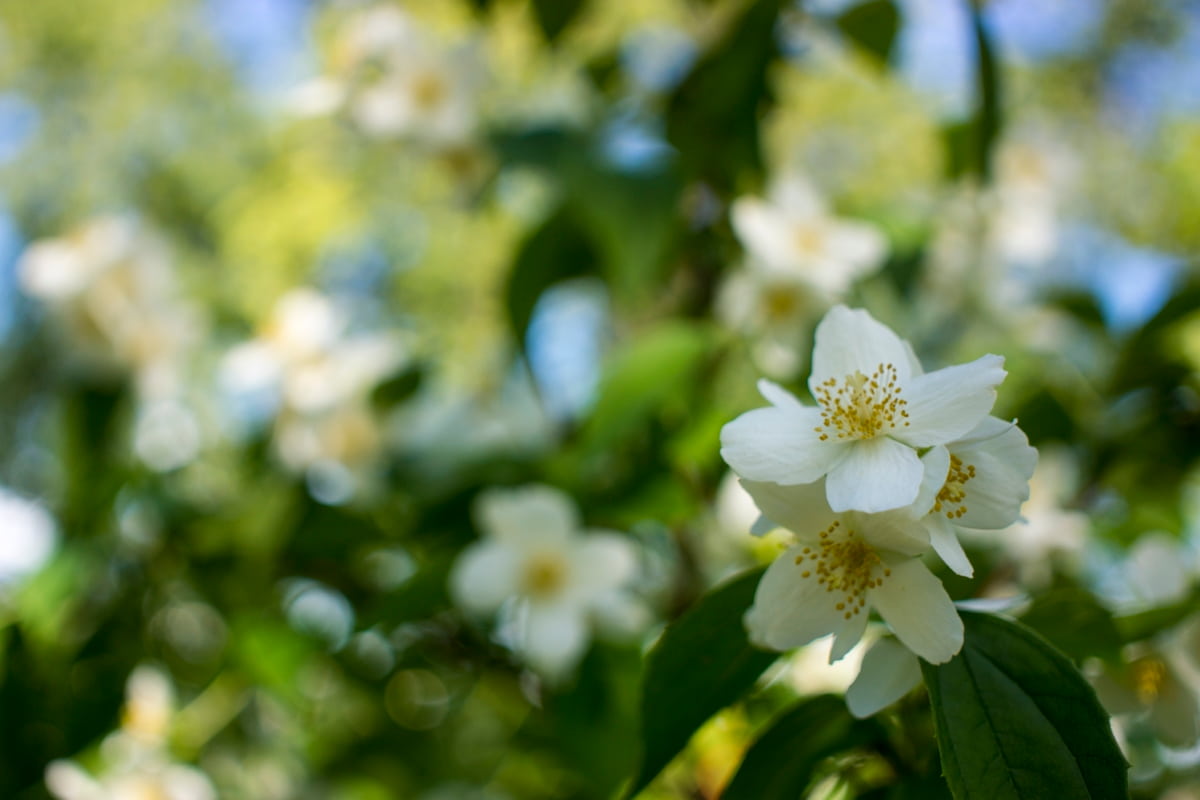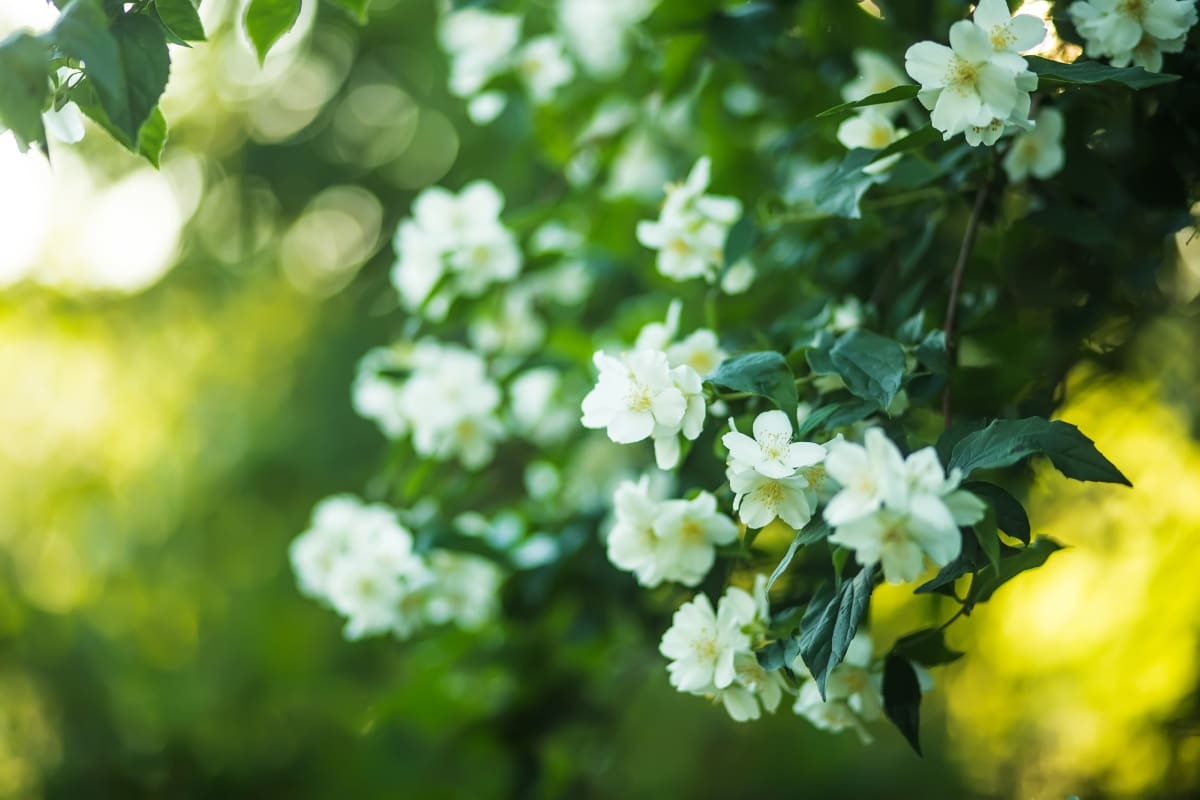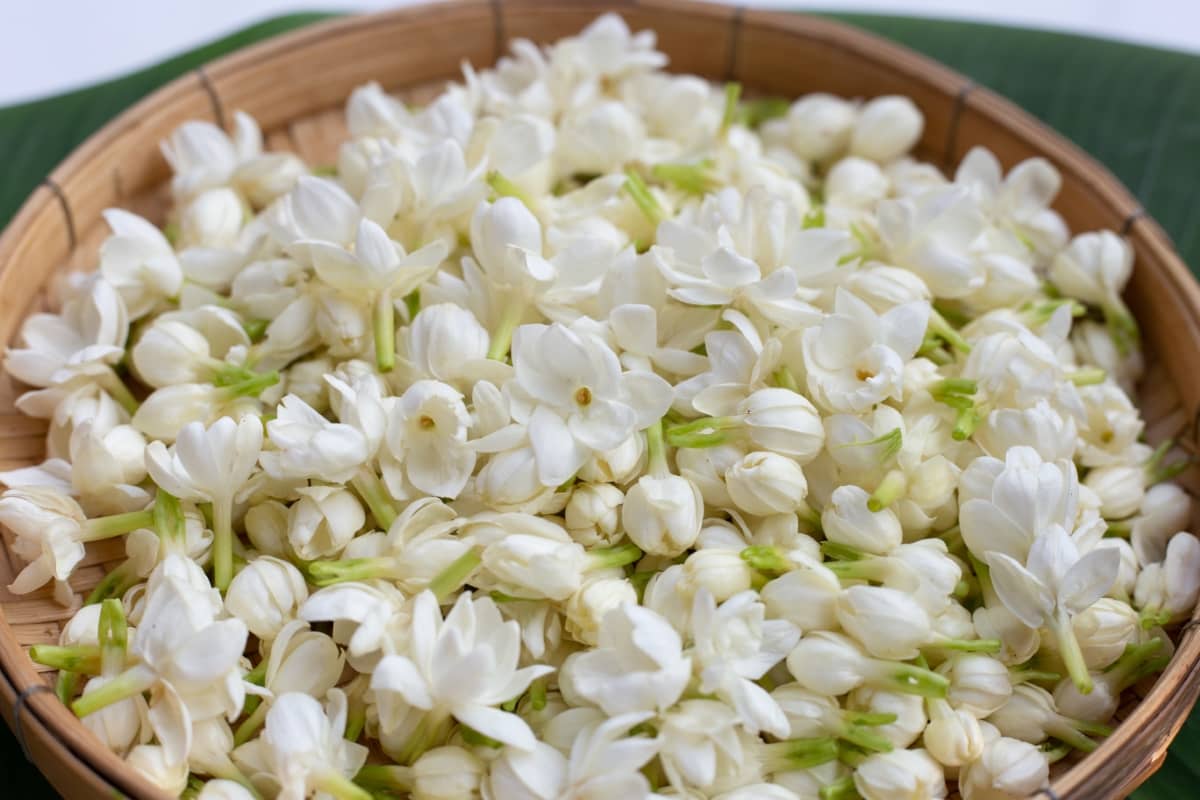The Indian Mogra Flower, also known as Jasmine Sambac, is a symbol of beauty and fragrance in South Asia and belongs to the Oleaceae family. The Indian Mogra flower, also known as Jasmine, offers a plethora of benefits beyond its enchanting fragrance. This delicate bloom is not just visually stunning but also holds significant medicinal properties.

Historical Significance and Cultural Importance
The Indian Mogra Flower holds a significant place in history due to its cultural importance and symbolic value in various traditions and ceremonies. Dating back centuries, the Mogra flower has been revered for its beauty, fragrance, and spiritual connotations. In India, the Mogra flower is often associated with love, purity, and divine grace. It is commonly used in religious rituals, bridal decorations, and traditional festivals like weddings or religious ceremonies.
The delicate white petals of the Mogra are believed to symbolize purity of heart and soul. Culturally, the intoxicating scent of the Mogra flower has inspired poets, artists, and musicians throughout history. Its captivating aroma has been celebrated in literature as a metaphor for beauty. To successfully grow Indian Mogra Flowers, ensure they receive plenty of sunlight and well-draining soil.
Varieties of Mogra Flower
Several varieties of the beautiful and fragrant Mogra flower stand out for their unique characteristics and charm. The most popular variety is the Arabian Jasmine, known for its sweet scent and delicate white petals. Another variety worth mentioning is the Grand Duke of Tuscany Jasmine, recognized for its double flowers and strong fragrance which can fill a room with its captivating aroma.
The Belle of India Jasmine is another stunning variety with large, showy blooms that exude a delightful fragrance. For those looking for a compact plant, the Maid of Orleans Jasmine is an excellent choice, perfect for smaller spaces or containers.
Climate and Soil Requirements for Growing Mogra
The Indian Mogra flower thrives in warm climates with plenty of sunlight. It is suited for growing in tropical and subtropical regions where temperatures range from 20°C to 32°C. An acidic to neutral pH level between 6.0 and 7.5 is ideal for optimal growth.
In case you missed it: 11 Strategies to Make Jasmine Plants Bloom: Practical and Proven Methods

To ensure successful cultivation, the planting area should receive sunlight for about 4 to 6 hours daily and have good air circulation. The Mogra plants should be regularly but infrequently watered to encourage deep root growth. Mulching around the Mogra plant base can help retain moisture and suppress weed growth.
Planting and Propagation Techniques
Indian Mogra can be planted either from seeds, cuttings, or layering.
- Seeds: Soak the seeds in water for a few hours before planting. Sow seeds in well-draining soil and keep them moist until germination.
- Cuttings: Take 6–8-inch cuttings from healthy, mature plants. Remove the lower plant leaves and dip the cut end in the rooting hormone. Plant the Mogra cuttings in a pot filled with well-draining potting mix.
- Layering: Bend a low-growing stem down to the ground and then cover it with soil, leaving the tip exposed. Once roots develop, sever the stem from the parent plant and transplant it.
Care and Maintenance Tips
- Watering: Provide regular watering, especially during the flowering season, but be careful not to overwater as it can lead to root rot.
- Pruning: Trim back any dead or overgrown branches to promote new plant growth and maintain a compact shape. Prune after blooming for best results.
- Fertilizing: Feed your Mogra with a balanced fertilizer during the planting season to provide essential nutrients for strong roots and abundant flowers.
- Sunlight: For optimal blooming, place your Mogra plant in a location that receives sunlight at least 4-6 hours per day.
Pest Control: Watch out for common pests like aphids or whiteflies and treat them promptly with natural remedies or insecticidal soap.
Common Pests and Diseases
Some of the most common pests that can affect your Mogra plants include aphids, whiteflies, and spider mites. These little critters can suck the sap from your plants, causing damage to the leaves and flowers. To combat these pests, you can use neem oil sprays to keep them at bay. Regularly inspecting your Mogra plants for any signs of infestation is key to catching these pesky bugs early on.
In case you missed it: How to Plant Jasmine from Cuttings: A Complete Growing Guide for Beginners

In terms of diseases, Mogra plants are affected by fungal infections. To prevent these issues, ensure proper air circulation around your plants by spacing them appropriately and avoiding overhead watering.
Uses of Mogra in Traditional Medicine and Perfumery
The Mogra flower’s enchanting fragrance is not just a treat for the senses; it also holds significant value in traditional medicine and perfumery. In Ayurveda, Mogra is believed to have cooling properties that can help alleviate anxiety when used in aromatherapy or massage oils. Furthermore, the essential oil extracted from Mogra flowers is highly sought after in the perfume industry for its sweet and floral aroma.
It is often used as a top note in perfumes to add a touch of sophistication and elegance. In traditional Indian medicine, Mogra is also known for its skin-healing properties. The flower extracts are used in various skincare products to soothe irritation and promote healthy skin.
Harvesting and Post-Harvest Handling
The best time to harvest Mogra flowers is in the early morning when they are at their freshest and most fragrant. It’s important to gently pluck the flowers without damaging them to preserve their beauty and aroma. After harvesting, it’s crucial to handle the Mogra flowers with care during post-harvest processing. Remove any damaged or wilted blooms to ensure only the finest quality flowers are used.
Proper handling techniques include storing the flowers in a cool, dark place away from direct sunlight to maintain their freshness for longer periods. Whether you’re using Mogra flowers for traditional medicine, perfumery, or decorative purposes, proper harvesting and post-harvest handling techniques are essential for preserving their fragrance and beauty.
In case you missed it: 13 Common Jasmine Plant Problems: How to Fix Them, Solutions, and Treatment

Economic Importance and Market Trends
The economic importance of the Indian Mogra flower extends beyond its beauty and fragrance. In the market, Mogra holds significant value due to its uses in traditional medicine and perfumery industries. The high demand for Mogra flowers has created a lucrative market for farmers and businesses involved in its cultivation.
With increasing awareness about natural products, there is a growing trend towards using Mogra extracts in skincare and aromatherapy products. Furthermore, the export opportunities for Indian Mogra flowers have also been on the rise, with many countries appreciating the quality and uniqueness of these fragrant blooms. This presents a promising outlook for those involved in the production and trade of Mogra flowers both locally and internationally.
By following these planting and propagation techniques, you can successfully grow this fragrant and beautiful flowering plant in your garden or home landscape. With proper plant care, you can enjoy the delightful fragrance and elegant beauty of Indian Mogra flowers throughout the growing season, adding charm and allure to your outdoor space.
- How to Grow Hibiscus from Flower
- Plantation Ideas for Home Decoration: A Beginners Guide
- Flower Garden Designs and Layouts for Beginners
- Planting and Spacing Techniques in Papaya: A Beginner’s Guide
- Growing Gold: Essential Techniques for Planting Pineapples
- How to Make Kalanchoe Plant Bushy: Home Remedies and Solutions
- 11 Reasons Why Your Gardenia is Not Blooming: Home Remedies and Solutions
- Eco Elegance: The Guide to Designing a Drought-Tolerant Landscape
- Gardening on a Slope: Strategies for Hillside Landscaping